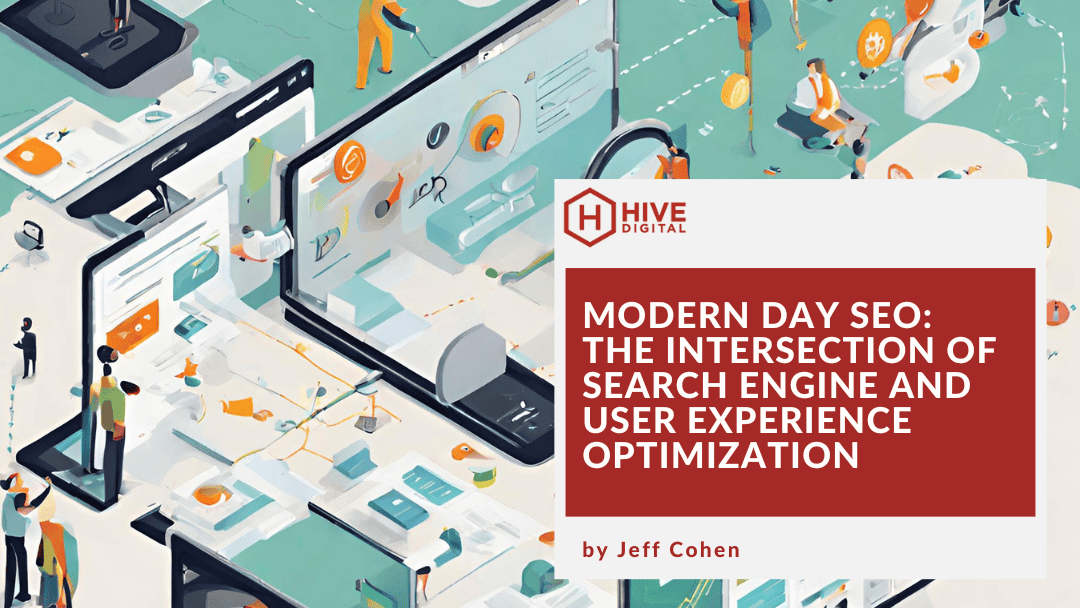One thing remains constant in digital marketing: the constant desire to rank higher on search engine results pages (SERPs). However, search engine optimization (SEO) has transformed dramatically in recent years, and gone are the days of simply stuffing keywords into content. Today’s SEO is a coordinated dance between pleasing search engines and creating an exceptional user experience (UX).
Organic Search Puts The User at the Center
Google’s search algorithms prioritize websites that offer a smooth, informative, and engaging experience for users. This user-centric approach is reflected in metrics like Core Web Vitals, which measures aspects of UX like loading speed, responsiveness, and visual stability. Websites with good Core Web Vitals scores not only provide a better experience but also tend to rank higher in search results.
Beyond Keywords: Content with Purpose
Your copywriting team plays a crucial role in crafting content that ticks all the boxes for modern SEO. They understand how to weave relevant keywords organically into a narrative, ensuring your content is discoverable by various search engines. But more importantly, they are experts in creating compelling and informative content that address the specific needs and interests of your audience; not just AI-generated fluff aimed at gaming the system. So take all that great keyword research and persona building you did and work closely with the people that can turn it into something actual humans want to read (it’s actually what the search engine robots keep asking for as well).
By working closely with your copywriting team, you can develop content that:
- Educates and Informs: Provides valuable insights and solutions to your audience’s problems, establishing yourself as a thought leader and authority on a topic.
- Engages and Entertains: Use storytelling, humor, or other creative elements to keep users hooked and coming back for more.
- Optimizes for Readability: Structure content with clear headings, subheadings, and bullet points to enhance scannability and user experience.
- Targets the Right Audience: Tailor your content to the specific demographics and interests of your target audience, increasing its relevance and impact.
This collaborative approach to content creation fosters a synergy between SEO best practices and user-centric storytelling. The result? Content that not only ranks well in search results but also resonates with your audience, attracts natural backlinks, and can build a loyal following around your brand. In other words, optimize your content for search engines, but also make sure your content is genuinely informative and is something your audience would actually want to read.

The Marriage of SEO and UX:
Optimizing for UX isn’t only about ranking higher, it’s about crafting a website that visitors enjoy using. This translates into benefits beyond SEO, such as increased brand loyalty, higher conversion rates, and a more sustainable online presence. When you create a positive user experience, you improve your SEO and also build a strong foundation for long-term success goals like improved traffic, higher conversion rates, building brand loyalty, and more.
These are some of the most common ways to achieve this marriage of SEO and UX:
Clear and Intuitive Website Structure and Navigation:
- Imagine your website as a well-organized house. Every room (webpage) should be easy to find and logically connected. A clear and intuitive structure uses menus, breadcrumbs, and internal linking to guide users effortlessly through your website.
- Think minimal clicks. Ideally, users should be able to find the information they need within 3 clicks from the homepage.
High-Quality, Scannable Content Optimized for Mobile Devices:
- High-quality content is informative, engaging, and addresses your target audience’s needs. It should be well-written, free of grammatical errors, and provide value to the reader.
- Scannable content is easy to digest visually. Use clear headings, subheadings, bullet points, and images to break up text and allow users to quickly grasp the main points.
- Ensure your website and content adjust seamlessly to different screen sizes, providing a smooth user experience on desktops, tablets, and smartphones.
Visually Appealing Design with Fast Loading Times:
- Visual appeal creates a positive first impression. Use high-quality images, graphics, and a clean layout that’s easy on the eyes. Maintain a consistent visual style throughout your website.
- Nobody likes waiting for a website to load. Optimize your image and video assets, minimize code, and consider caching mechanisms to ensure your website loads quickly on all devices.
Accessibility to All Users:
- Accessibility ensures everyone can use your website as intended. This includes users with visual impairments, hearing impairments, or motor skill limitations.
- Web Content Accessibility Guidelines (WCAG) provide a framework for creating accessible websites. By following WCAG recommendations, you can incorporate features like alt text for images, keyboard navigation options, and screen reader compatibility. This makes your website inclusive and usable for a wider audience.

Collaboration Goes a Long Way
Collaborative efforts between marketing and design teams can be a game changer for modern-day SEO success. The teams that make up these two aspects of your website efforts can share insights and align their goals and strategies to create a seamless experience for both search engines and users. This is where collaborative planning makes a significant impact. Marketers bring keyword research, competitor analysis, and user personas to the table, informing content strategy and user needs. Designers translate that information into clear information architecture, user-friendly layouts, and visually appealing interfaces. This collaborative approach ensures a website not only ranks well but also provides an enjoyable experience for visitors
Web Experiences Need Continuous Improvement
But don’t forget, SEO and UX optimization were never a separate, “set-it-and-forget-it” endeavor and that’s no different when working with them together. Anyone who’s had a website for more than a year knows that this optimization process is perpetual. Once you’ve got that great new site live, be sure to install some heatmap analytics – for those who want something free and easy, Microsoft Clarity is a great option to start learning with. Be sure to regularly test your website with real users, gather feedback, and adapt your strategies accordingly. When you use this data to measure user engagement along with your standard SEO KPIs, you can ensure your website remains a frontrunner in the ever-competitive world of search.
Shifting Gears: From Keyword Obsession to User Centricity
The classic SEO mindset revolves around manipulating search engines through keyword stuffing and other cheap tactics. Modern day SEO requires a complete shift in gears; instead of obsessing over keywords, we prioritize creating a website that users will genuinely love to visit. This user-centric approach not only satisfies search engines that measure the value of UX, but also fosters a loyal audience and builds a thriving online community around your brand.
I know it probably sounds cliche by now, but a holistic strategy really does set you up for long-term SEO success that goes beyond short-lived ranking boosts. You’re no longer chasing the next algorithm update (…even though you’ll probably still try), but instead you’re building a website with a strong foundation that attracts and retains users naturally. This focus on user experience fosters trust and loyalty, ultimately leading to a more sustainable and rewarding online presence.
So say goodbye to the name SEO and say hello to UEO… no, scratch that. Maybe UXO, or SEOxUX. No. Nevermind. Let’s stick with SEO but just be mindful to always keep UX in the mix.

